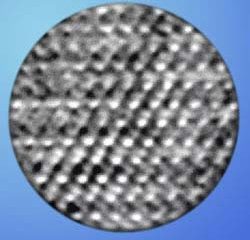Materials Sciences
Materials management deals with the research, development, manufacturing and processing of raw and industrial materials. Key aspects here are biological and medical issues, which play an increasingly important role in this field.
innovations-report offers in-depth articles related to the development and application of materials and the structure and properties of new materials.

Computer simulations mimic growth of ’dizzy dendrites’
Crystals are more than just pretty faces. Many of the useful properties associated with metal alloys or polymer blends — like strength, flexibility and clarity — stem from a material’s specific crystal microstructure. So the more scientists know about how crystal patterns grow as a material solidifies, the better they’ll be able to create new materials with specific properties.
In a recent issue of Nature Materials, National Institute of Standards and Technology (NIST) researche

New Antibacterial Textiles – Research News in Polymer International
Nano-sized silver particles open way to new breed of antimicrobial materials
Scientists can now incorporate silver particles into polypropylene to produce an anti-microbial material that could be used in anything from carpets, to napkins and surgical masks.
Silver has been medically proven to kill over 650 disease-causing organisms in the body and is also very safe. By combining silver and polypropylene to produce an organic-inorganic fibre, researchers have produced the first safe, ant

Imaging Lithium Atoms
One Angstrom Microscope’s observations of the smallest, lightest metal atoms are a first for electron microscopy
For the first time researchers have used a transmission electron microscope — the One Angstrom Microscope (OÅM) at the Department of Energy’s National Center for Electron Microscopy (NCEM) at Lawrence Berkeley National Laboratory — to image lithium atoms. Only atoms of hydrogen and helium are smaller and lighter than those of lithium, which under ordinary conditions is

Wood to replace oil in building polymers
A new type of polymers can be produced in a more environmentally friendly way, using wood instead of oil as a raw material, according to research at the Royal Institute of Technology (KTH) in Stockholm, Sweden. The next step is to replace the wood with the process water from the pulp industry. This means a solution to an environmental problem and access to a cheap renewable raw material.
The substances in question, hemicellulose-based hydrogels, are a good example of how oil can be replaced

Miniature mix-ups to speed materials research
A new National Institute of Standards and Technology (NIST) project aims to stir up materials research by adapting “lab-on-a-chip” technology to mix and evaluate experimental concoctions at a rapid clip, hastening improvements in products ranging from paints to shampoos to plastics.
Initially, researchers at the NIST Combinatorial Methods Center (NCMC) and several of the NCMC’s company members plan to rev up the search for new or better emulsions–often-complex formulations that are th

Tooth, heal thyself
Dentists beware: Teeth soon may be smart enough to fix themselves.
“Smart materials” invented at the National Institute of Standards and Technology (NIST) soon may be available that stimulate repair of defective teeth. Laboratory studies show that these composites, made of amorphous (loosely structured) calcium phosphate embedded in polymers, can promote re-growth of natural tooth structures efficiently. In the presence of saliva-like solutions, the material releases calcium and pho